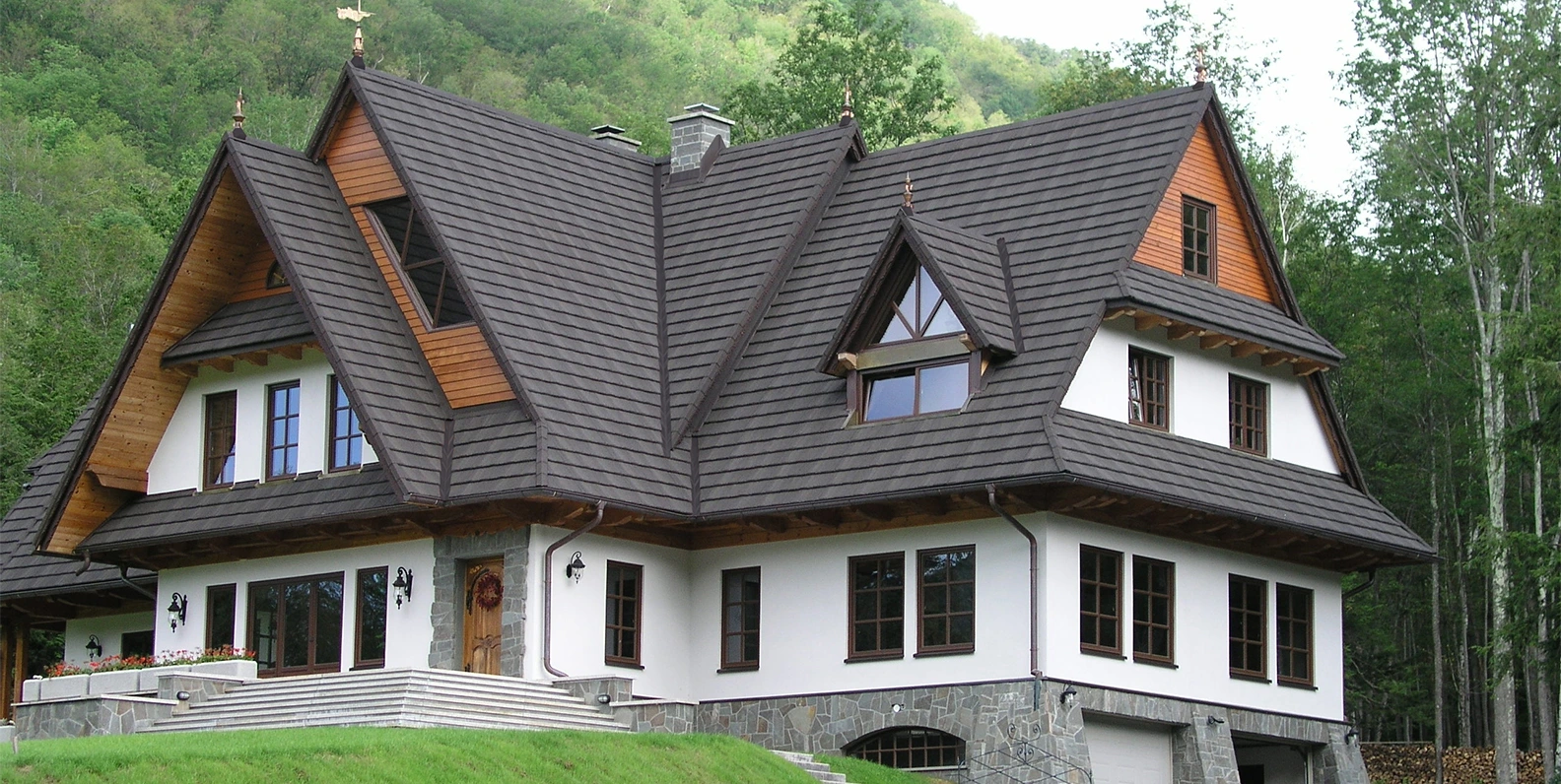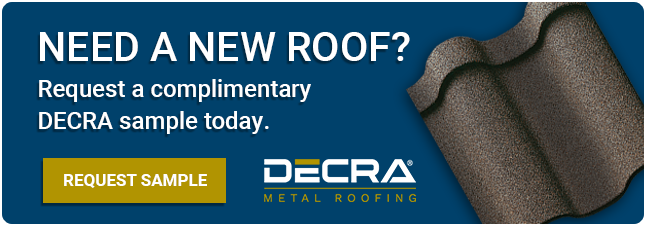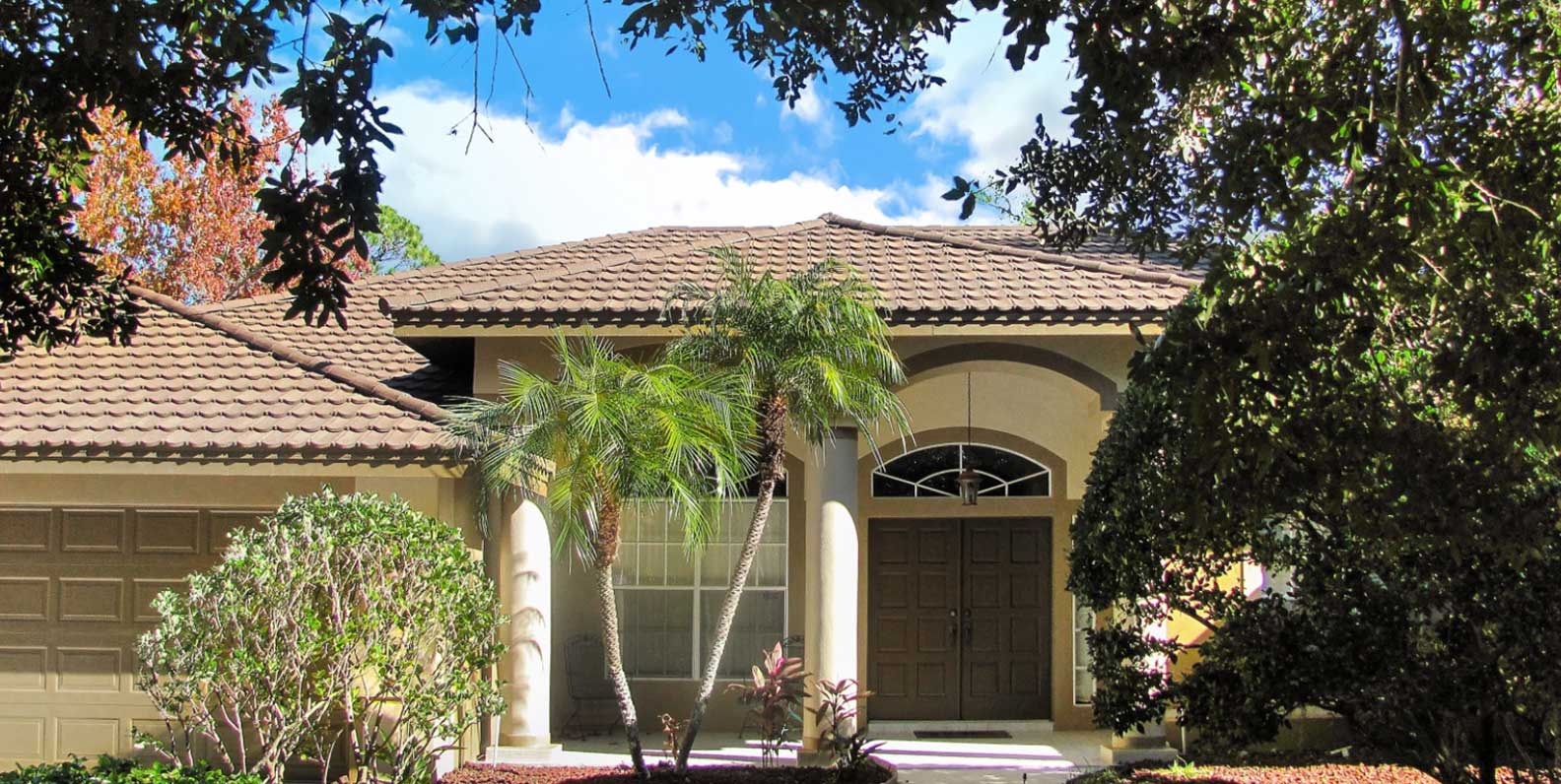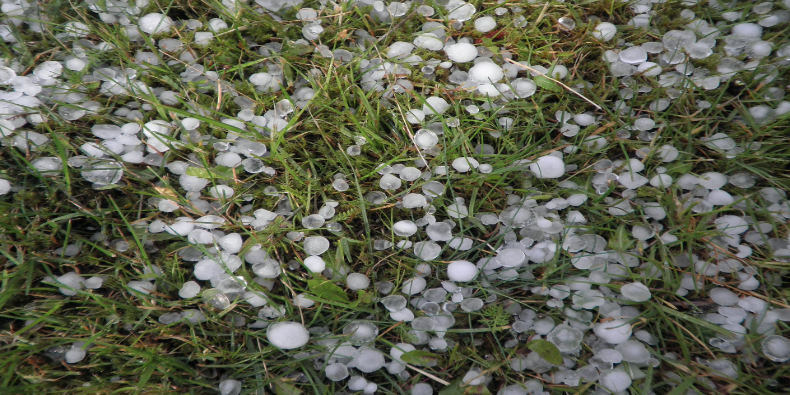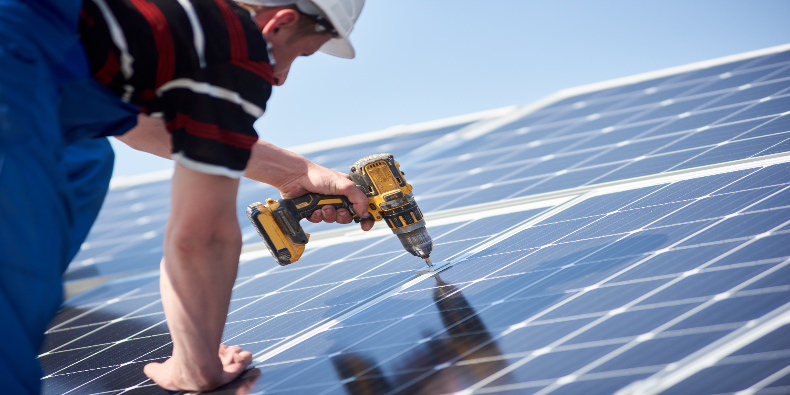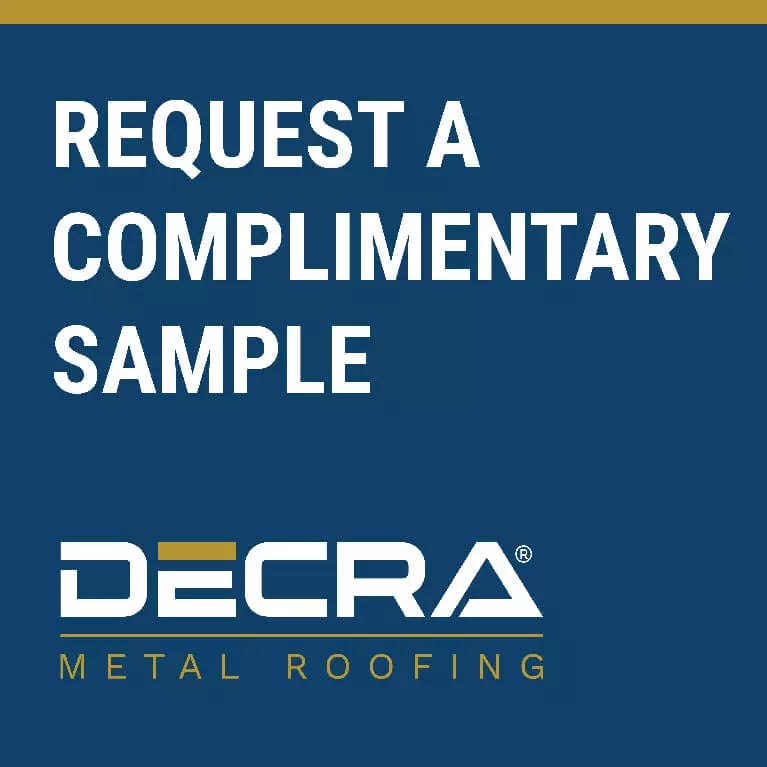Doing some research on metal roofing? You’ve come to the right place.
Consider this article your resource hub for all things metal roofing.
We've compiled the top 10 things homeowners ask about metal roofing, along with links to in-depth articles, studies, and research to help you decide if a metal roof is right for your home.
Let’s get started. Here are 10 things to know when considering a metal roof.
- There are different types of metal roofs.
- Residential metal roofing originated in World War II.
- Stone-coated metal roofing looks the same as traditional roofing materials.
- Lightweight metal roofing adds reinforcing shear strength.
- Metal roofs have the highest rating for hail resistance.
- Metal roofs can withstand hurricane-force winds and tornados.
- Non-combustible metal roofing has the highest rating for fire resistance.
- Energy-efficient metal roofing can reduce cooling costs by up to 40%.
- Fact vs. Fiction: Common myths about metal roofing.
- How to evaluate the ROI and cost of a metal roof.
1. There are Different Types of Metal Roofs
Metal roofing offers as much variety as the automotive industry, with options ranging from basic, durable designs to high-end luxury styles. Each type of metal roofing has its own aesthetics, features, installation methods, and cost considerations.
What they all share, however, is exceptional strength and resilience.
>>>Related Resource: Learn more about the different types of metal roofing.
What’s important to understand is that metal roofing isn't confined to an industrial look.
Traditionally, materials like aluminum, standing seam, and corrugated metal have been mainstays in industrial settings and have been used in factories, mills, and warehouses for over a century. However, these options weren’t always suitable for residential roofing. 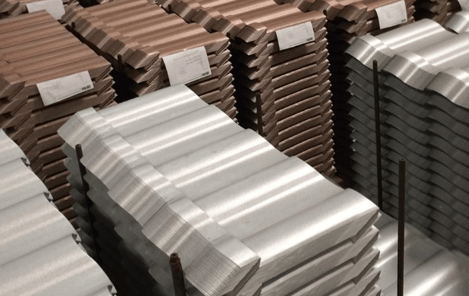 This changed in 1957 when stone-coated metal roofing was introduced to bridge the gap between industrial durability and architectural beauty. Homeowners could now benefit from the industrial strength of metal roofing without compromising on style.
This changed in 1957 when stone-coated metal roofing was introduced to bridge the gap between industrial durability and architectural beauty. Homeowners could now benefit from the industrial strength of metal roofing without compromising on style.
During the manufacturing process, natural stone granules are adhered to high-grade sheets of steel.
The natural stone granules allow for a wide range of vivid colors and distinct textures that replicate the look of asphalt shingles, clay tiles, or wood shakes.
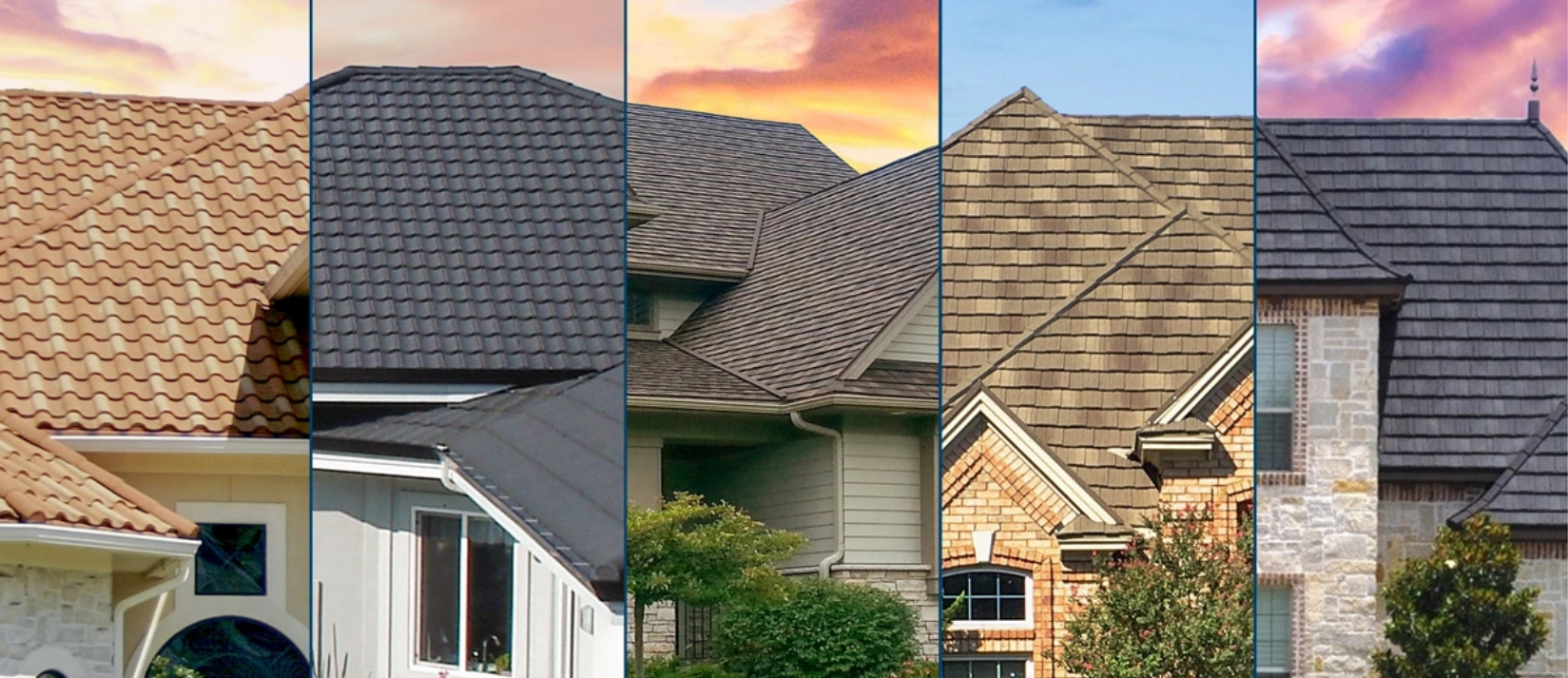
>>>Related Resource: View the stone-coated metal roofing gallery.
2. Residential Metal Roofing Originated During World War II
Stone-coated metal roofing transformed the residential roofing market, but its origins surprisingly come from a World War II innovation.
In 1939, corrugated metal roofs were used by the Allies on critical command buildings. Unfortunately, the shiny metal roofs made for easy targets by German bombers because of their reflective surfaces. In response, the Allies tasked Decraspray Co. to develop a camouflage solution. The Decraspray Co. created a bituminous emulsion that not only camouflaged the roofs but also provided durable, water-resistant protection.
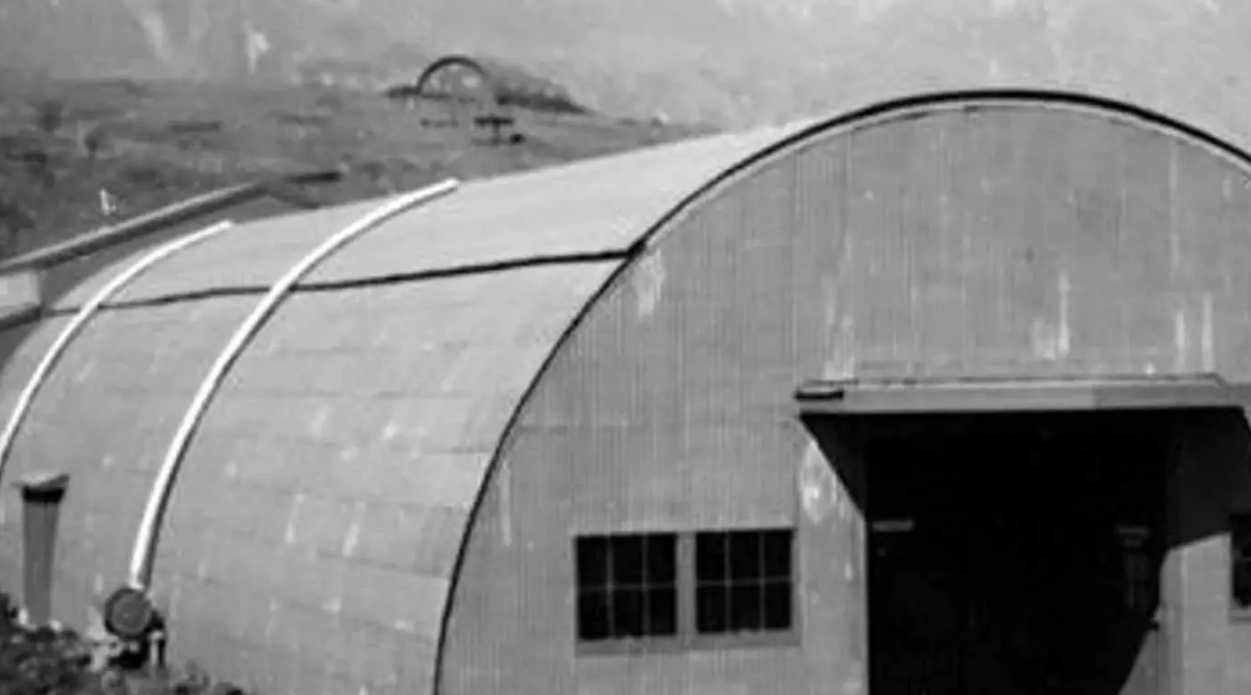
After the war, it was discovered that the Decraspray formula preserved the underlying metal roofs in excellent condition. Recognizing its potential beyond military use, the formula was marketed for residential and commercial applications.
Today, metal roofing is the second most popular roofing material in the United States.
>>>Related Resource: Read the full history of stone-coated metal roofing.
3. Stone-Coated Metal Roofing Looks the Same As Traditional Roofing Materials
Stone-coated metal roofing has transformed the residential roofing market by combining the industrial-strength durability of metal without industrial aesthetics. This innovation delivers the design flexibility needed to complement a variety of architectural styles, from Colonial and Craftsman to Mediterranean and Spanish-style homes.
In fact, stone-coated metal roofing provides the same aesthetics as traditional roofing materials, such as asphalt shingles, clay tiles, and wood shakes. 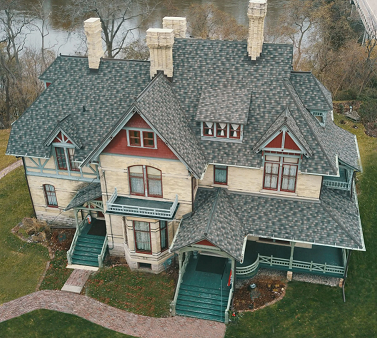 Asphalt Shingles:
Asphalt Shingles:
Traditionally favored for their cost-effectiveness and ease of installation, asphalt shingles are known for providing dimension, texture, and color.
However, they have one of the shortest lifespans of any roofing material, poor energy efficiency, and several serious environmental concerns.
Stone-coated metal shingles offer the same colors, depth, and dimensionality as an asphalt shingle roof, but with significantly greater durability, longevity, and energy efficiency.
>>>Related Resource: Learn more about stone-coated metal roofing vs. asphalt shingles.
Clay Tiles: The classic elegance of classic clay tiles can’t be denied. They’re practically a requirement for Spanish and Mediterranean-style homes. However, clay tiles are extremely fragile and heavy and require frequent maintenance. Stone-coated metal roofing is shaped and textured to achieve the same look as clay tiles–both scalloped or barrel-shaped designs–without the weight, susceptibility to damage, and frequent maintenance.
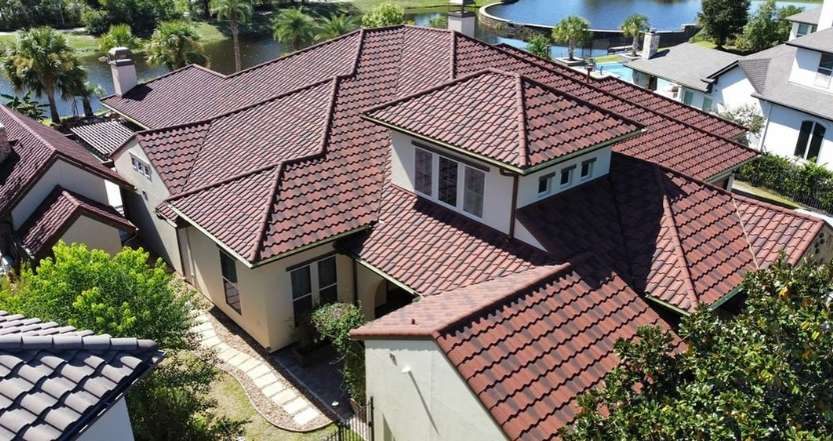
>>>Related Resource: Learn more about stone-coated metal roofing vs. clay tiles.
Wood Shakes: While wood shake roofs were popular during the 1800s, they have fallen out of popularity as more modern and durable roofing materials emerged. Wood roofs come with significant issues. Not only are they heavy, but they require ongoing maintenance to prevent rot, mold, and other organic growth. Additionally, wood roofs are combustible and are not ideal for homes in fire-prone regions. Stone-coated metal wood shakes provide the same rustic appearance as wood shakes and are resistant to severe weather, fire, and rot.
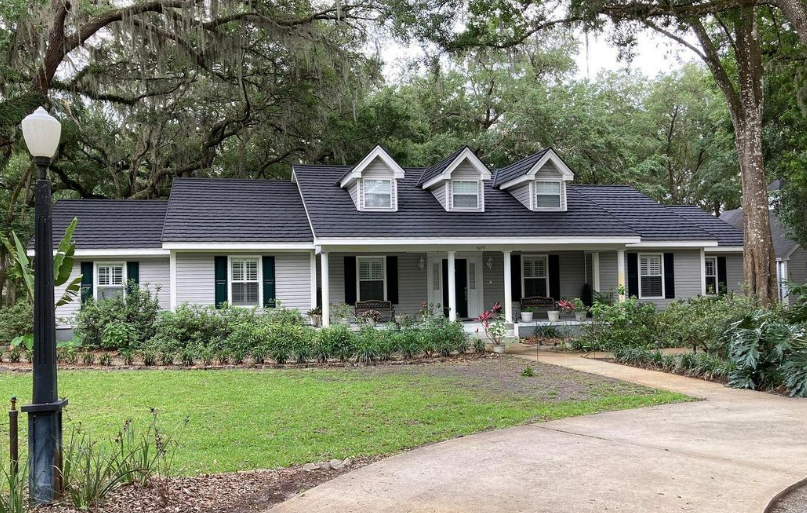
>>>Related Resource: Learn more about stone-coated metal roofing vs. wood shakes.
4. Lightweight Metal Roofing Adds Reinforcing Shear Strength
Weight is an overlooked aspect of residential roofing, and some homeowners are surprised to learn that heavier is not better.
A lightweight roof that adds shear strength to the building is ideal for several reasons because:
- No additional reinforcement or construction is required to support the weight of the roof.
- It can eliminate the need for a complete tear-off during a roof replacement. This helps reduce time, labor, and costly waste disposal fees. Be sure to check your local building codes to see if your home is eligible for a roof over with a metal roof.
- It provides an exceptional strength-to-weight ratio that adds reinforcing shear strength to the roof deck, which is especially important in hurricane and earthquake-prone regions.
Here’s how metal roofing weighs in compared to traditional roofing materials:
- Metal Roofing: Weighs up to 1.6 lbs. per square foot
- Wood Shingles/Shakes: Weighs up to 4.5 lbs. per square foot
- Asphalt Shingles: Weighs up to 4.3 lbs. per square foot
- Clay or Concrete Tile: Weighs up to 6 -11 lbs. per square foot
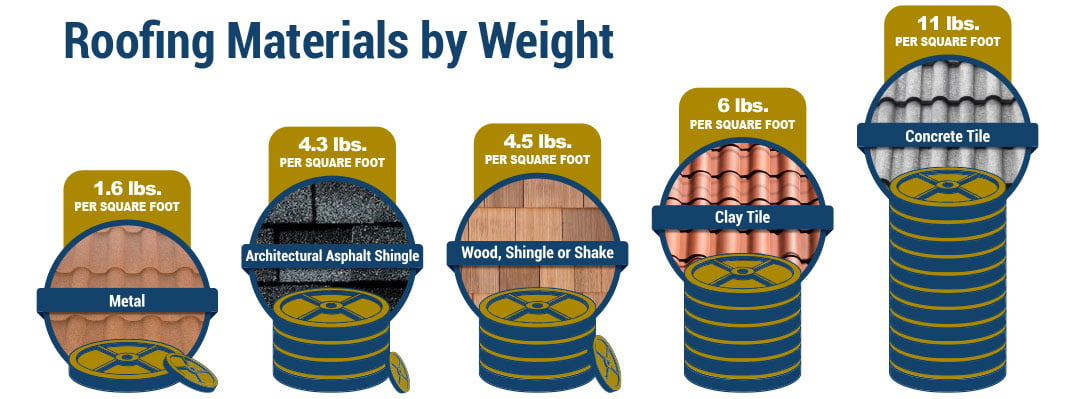
Don’t worry, even though metal roofs are one of the lightest roofing materials, the inherent properties of metal protect against nearly anything Mother Nature has to offer, including hail, hurricane-force winds, tornados, and fire.
>>>Related Resource: Learn more about the importance of a lightweight roof.
5. Metal Roofs Have the Highest Rating for Hail Resistance
The UL2218 Class 4 test, conducted by Underwriters Laboratories, is considered the industry standard for measuring the hail impact resistance of a roof.
It simulates the damaging impact of a 2-inch hailstone from 20 feet or higher on a roof. Roofing materials are rated Class 1 through Class 4 based on their resistance to the impact of steel balls dropped from varying heights. In order to achieve the highest possible Class 4 rating, the roofing material cannot exhibit any signs of fracture.
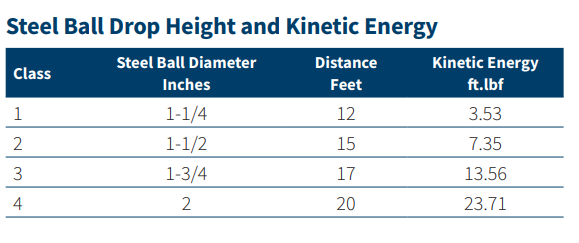
Most metal roofing products, including DECRA Metal Roofing, have achieved the highest UL2218 Class 4 Impact rating.
>>>Here are three resources to learn more about how hail can impact the roof:
- Guide to Class 4 Hail Resistance
- What does hail damage on a roof look like?
- What size hail will damage a roof?
6. Metal Roofs Can Withstand Hurricane-Force Winds and Tornados
Roof damage caused by wind occurs when the air pressure below the roofing system is greater than the air pressure above. This results in a push-pull force working together to separate the roofing materials from the roof deck, otherwise known as wind uplift.
-1-1.png?width=2500&height=1354&name=DECRA%20Wind%20Uplift%20Graphic%20Final%20Transparent%20wBackground%20(1)-1-1.png)
Traditional roofing materials have significant shortcomings when it comes to wind. Wood shakes, for example, tend to split and loosen around the fasteners, making them extremely prone to wind uplift. Easily fractured clay tiles are also highly prone to damage from wind-driven debris.
However, some metal roofing products, such as DECRA Metal Roofing, are engineered to withstand high winds. DECRA roofs feature a unique interlocking panel system to keep the roofing panels firmly in place during hurricane-force winds. In fact, DECRA roofs are able to withstand high winds so well that they are in compliance with the high-velocity hurricane zone requirements of counties like Miami-Dade, Florida, which has some of the strictest building codes in the nation.
>>>Here are three resources to learn how high winds can impact the roof:
- Can metal roofs withstand hurricane-force winds?
- Are metal roofs better in a tornado?
- What is the Best Type of Roof for Wind Resistance and Wind Uplift?
7. Non-Combustible Metal Roofing Has the Highest Rating for Fire Resistance
Metal is a non-combustible material, and metal roofing products carry the highest possible Class-A fire rating. This means that the roofing material has proven effective against fire and flame penetration and provides excellent resistance to surface flame spread without the need for chemical treatments or other fire-suppressing materials.
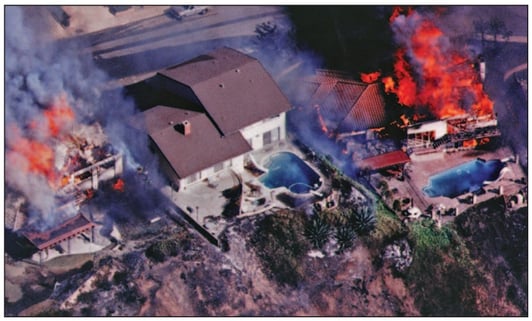
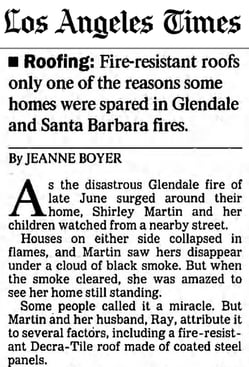
>>>Here are three resources to learn more about fire-resistant roofing:
- What is the best roof for fire?
- Fire-rated roof assemblies guide.
- What happens when lightning strikes a metal roof?
8. Energy-Efficient Metal Roofing Can Reduce Cooling Costs by Up To 40%
The inherent properties of metal reflect heat up and away from the roof and building below. Traditional asphalt roofs, on the other hand, absorb heat like a sponge and radiate heat down into the home long after the sun goes down.
Both the EPA and the U.S. Department of Energy have verified the superior energy efficiency of metal roofing.
What does this mean for homeowners? Since metal roofs are highly reflective and one of the most energy-efficient roofing materials, a new metal roof can reduce cooling costs by up to 40%.
Not only are metal roofs extremely energy efficient, but they are also environmentally friendly, 100% recyclable at the end of their lifespan, and sustainable
>>> Here are three resources about the energy-efficiency and environmentally friendly benefits of metal roofing:
- What is the most energy-efficient type of roof?
- Are metal roofs energy efficient?
- Are metal roofs environmentally friendly?
9. Fact vs. Fiction: Common Myths About Metal Roofing
There are some myths floating around about metal roofing, and it’s important to differentiate fact from fiction. For example:
Myth #1: Metal roofs make houses hotter in the summer.
False: Metal roofs are actually one of the energy-efficient types of roofing because they reflect heat up and away from the home below.
Myth #2: Metal roofs are noisy in the rain.
False: Metal roofs are no louder than traditional roofing materials.
Myth #3: Metal roofs rust.
False: DECRA metal roofs are designed to be highly resistant to rust and corrosion. Both sides of the steel sheets in DECRA products are coated to optimize corrosion resistance in moist and humid salt air environments.
Myth #4: Metal roofs attract lightning.
False: A metal roof doesn’t attract lightning more than any other type of roofing material.
>>>Related Resource: Read the full list of metal roofing myths.
10. How to Evaluate the ROI and Cost of a Metal Roof
Let's be upfront: metal roofs are not the cheapest roofing material on the market.
However, metal roofs are a great example of the old adage, "You get what you pay for."
Take asphalt shingles, for instance. They are typically the most budget-friendly roofing material to install. Yet, they have one of the shortest lifespans and need to be replaced as often as every 12 years—or even sooner in harsh climates.
While the initial cost to install a metal roof is higher than an asphalt shingle roof, a metal roof will last two to three times longer.
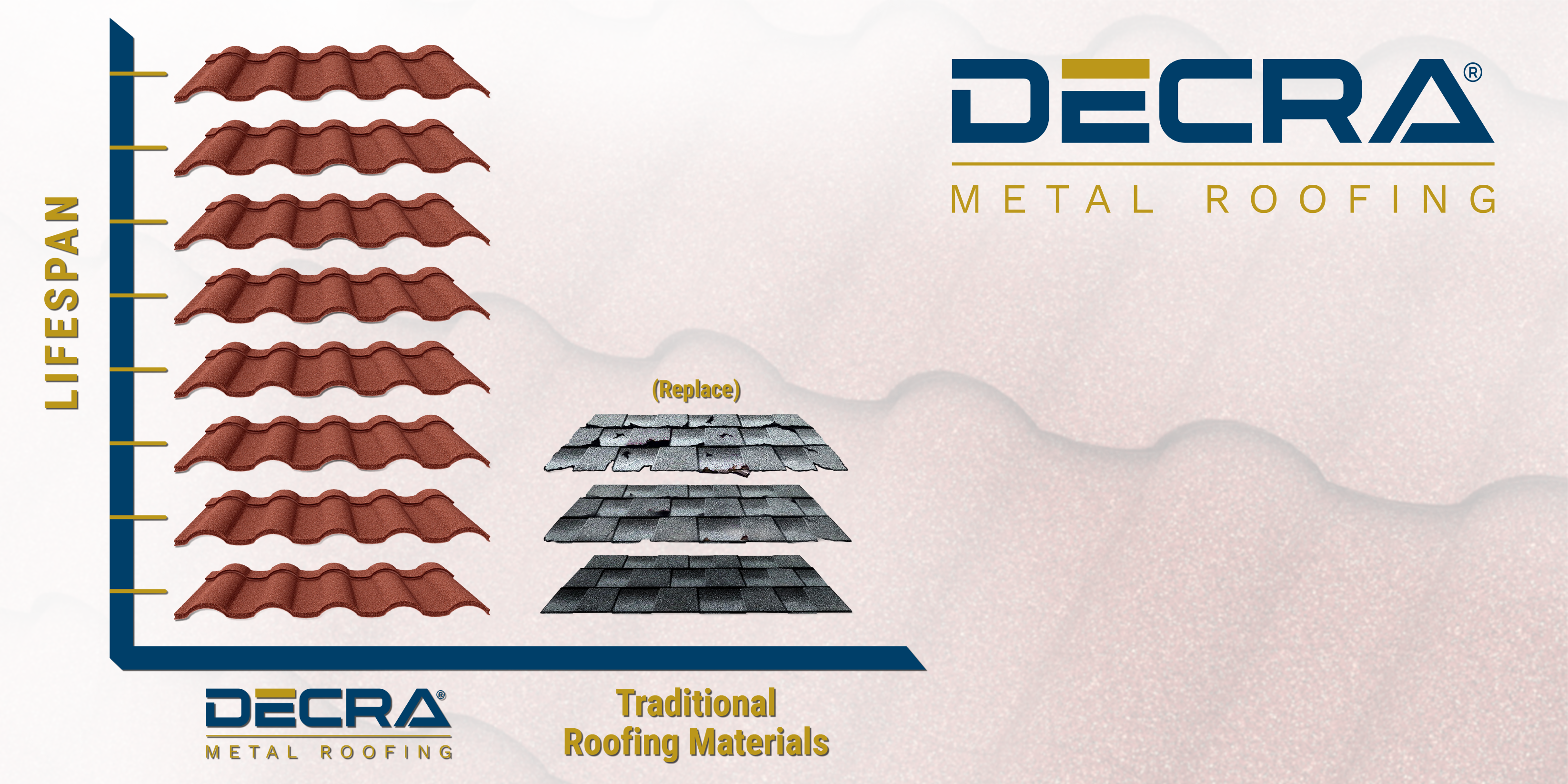
In addition to being one of the longest-lasting roofing materials, a metal roof also offers several other ROI-boosting benefits. According to national averages, homeowners are typically able to recoup between 85.9% - 95.5% of the cost of a new metal roof.
Other ROI-boosting benefits that should be considered when evaluating the cost of a metal roof include:
- Insurance Discounts: Metal roofs qualify for insurance discounts in many states. Progressive Insurance mentions this right at the top of its website.
- Energy Savings: As mentioned earlier in this article, metal roofs can reduce cooling costs by up to 40%.
- Property Value: A new metal roof can increase a home's average value by up to 6%.
It’s important to note that the cost of a metal roof can vary widely based on factors such as the location of the home, the complexity of the roof, labor costs, and other factors. Learn more about how much a metal roof costs in a recent article in USA Today, where Trevor Underwood, Vice President of Marketing at DECRA Metal Roofing, spoke in depth about this topic.
>>> Here are two resources about the ROI-boosting benefits of a new metal roof:
About DECRA Metal Roofing
If you’re looking for a roof that can withstand nearly anything Mother Nature has to offer without sacrificing style, you’re looking for a DECRA metal roof.
Since 1957, DECRA Metal Roofing has been the original stone-coated metal roofing manufacturer, setting the industry standard for durable roofing. Manufactured at our facility in Corona, California, DECRA roofs are tested above and beyond the requirements to ensure the quality DECRA is known for is present in every stone-coated metal roofing panel we produce.
Ready to see and feel the DECRA difference? Click here to request a complimentary sample.
Editor's note: This blog was originally published in August 2019, but has since been updated with relevant content.

